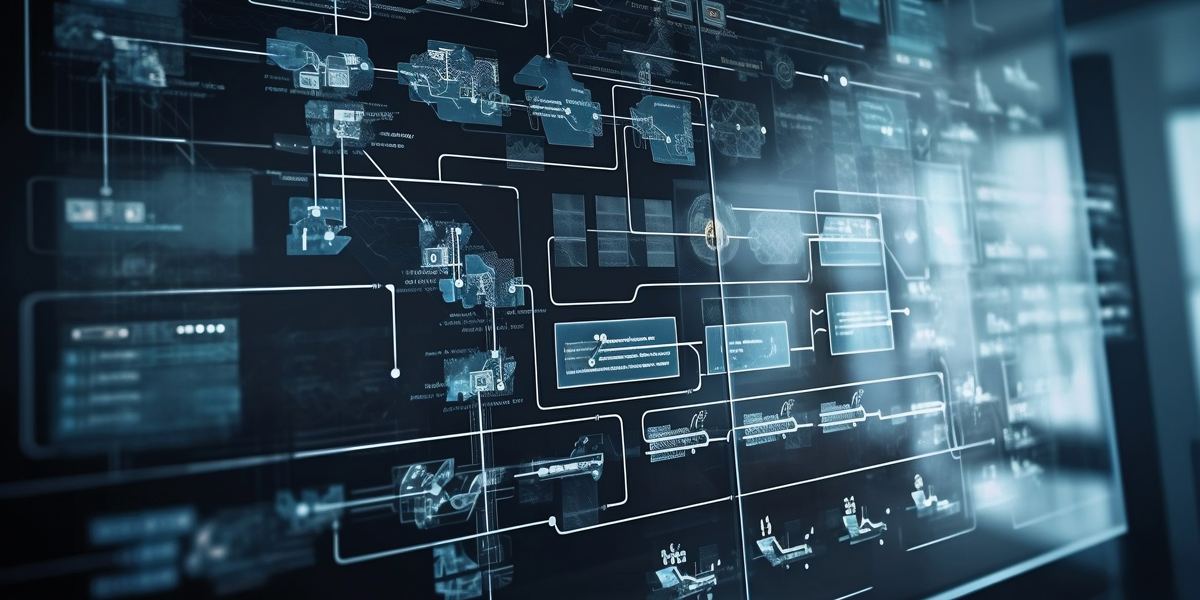
The Future of Production Workflows
Posted on Aug 6, 2024 by Samara Husbands
In Discussion
Hear from industry leaders about the inspirations and innovations transforming the way we work throughout the production pipeline
The Panel
- Joshua Callis-Smith, CTO, Cinelab Film & Digital
- Shaki Prasann, Creative collaboration director, Atomos
Definition: How are advancements in technology changing the landscape of pre-production workflows?
Shaki Prasanna: Pre-production is all about planning, people and budgets. Technology brought us spreadsheets and online, shared calendars. Now, we can use AI to optimise timings, keep track of resources and orchestrate filming days, including everything from catering to call sheets.
Joshua Callis-Smith: Over the years, there have been some huge advances that have massively benefited pre-production workflows. Remote working has enabled real-time collaboration in a way that wasn’t previously possible. VR is enabling immersive storyboarding and scene planning, allowing creators to experience and adjust scenes in a virtual space before production, and tools such as the Apple Vision Pro will only push this to the next level.
New 360° cameras and drones have changed location scouting; we can now stream these results instantly to the creatives and utilise collaboration tools such as Moxion and Frame.io for review and feedback. Virtual production has also allowed for the creation of realistic environments in pre-production, helping us to visualise complex scenes and plan for VFX integration ahead of shooting.
Def: In what specific areas of production workflows do you see AI making the biggest impact, and how?
JC-S: It’s undeniable that the impact of AI over the next ten years is going to be massive, but exactly how we’re going to use it is still being defined. We’re seeing AI tools flood the post-production market, from editing to colour grading. Some of these tools can free up more time for creativity by automating some of the repetitive, time-consuming tasks; while others, such as Sora, are generating content solely from text-based instructions.
The post landscape is going to be changed by AI, but it will embrace and adapt to it as it does with every changing technology. Hopefully, we’ll find a way to utilise it in a way that creates time for more creativity rather than restricting it.
SP: Metadata. AI can log content faster and with much more detail. Accurate metadata makes it easier to offload, back up, automate, search and retrieve content. It speeds up editing and post-production and can help deliver to a highly segmented audience.
Def: When it comes to managing production workflows, what are the key advantages and disadvantages of cloud-based solutions versus on-premises infrastructure?
JC-S: There are many advantages to working in the cloud when it comes to post-production. The ability to scale workstations, storage and data access from anywhere in the world offers unlimited potential, allowing companies to scale to meet demand during busy periods. Large-scale rendering or processing tasks can be handled without investing in additional hardware, utilising a pay-as-you-go model that offers flexibility to posts that weren’t previously available when working on-premises.
However, working in the cloud also requires a reliable, high-speed internet connection, ongoing cost management and careful consideration of data security. While the initial start-up can be lower cost, ongoing subscription fees and usage charges can add up, potentially leading to higher long-term expenses. Without careful management, there’s the risk of costs spiralling with unexpected usage or data-transfer fees.
SP: The cloud brings geographical freedom. You can work anywhere, with anyone. The cloud is also scalable – you can spin up resources in an instant and turn them off when you don’t need them. The cloud is unbeatable for speeding up the end-to-end process of acquisition, editing, post-production and delivery. It’s ideal for social media (we call our cloud methodology ‘Lens to Likes’) and breaking news coverage.
Def: How are new collaboration tools transforming the way production teams work together, especially in a remote or hybrid environment? Can you share any examples of successful implementations?
SP: The cloud removes physical barriers, so professionals can work together as if in the same room from anywhere in the world. It also removes the need for physical transportation, so a film clip can be everywhere at the same time. Furthermore, it encourages parallelism: one crew can shoot while another works on post-production.
We now have many examples of how Camera to Cloud collaborative workflows are speeding up production, especially in sports (LA Clippers), live events (BRIT Awards) and extending social media coverage – for example, the Sundance Film Festival.
JC-S: Remote review tools have really changed the landscape from a creative perspective. Tools such as Sohonet’s ClearView have made it possible for our colourist to review with directors, DOPs and producers in real time, regardless of their geographic location.
From a dailies perspective, especially when dealing with 35mm, this has been a game changer. We’ve been able to establish daily review sessions across 100+ day productions shooting on different continents, sometimes in the most remote regions, seamlessly allowing creatives to review and adjust their rushes before delivery.
Def: How are codec developments influencing production workflows? What should production teams be aware of when choosing codecs?
JC-S: The development of codecs has had a significant impact on enabling remote and cloud-based working practices. The transition from ARRIRAW to HDE and Sony’s work on its X-OCN codecs have allowed us to capture data of the same quality with significantly reduced data rates.
Without these codecs, remote dailies and cloud-based deliveries to studios such as Amazon and Netflix would be significantly more difficult, especially on the dailies side, where our shows can generate anywhere from 2 to 20TB of data daily. This data needs to be securely verified and archived in the cloud before the camera media can be reused, so the ability to deliver the files efficiently is essential for many productions.
SP: Increasing bandwidth and processing power are massively boosting performance and usability for the current generation of codecs. Highly efficient Long GOP codecs like H.265 can now be used in professional productions with 10-bit, high-bit-rate variants, and Apple ProRes Raw brings massive flexibility to post-production. Future codecs based on AI will provide orders of magnitude of improvements, but meanwhile, current technology based on cloud and hybrid workflows can be incredibly effective.
Def: What are the advancements in storage technology that are most promising for enhancing production workflows?
SP: Virtual storage, or storage in the cloud. It’s infinite and, these days, pretty fast. For on-premises or location workflows, SSDs now have commodity pricing, making everyday workflows faster and cheaper.
JC-S: With everything storage-based at an enterprise level, you’d need to weigh up cost vs efficiency. We’ve used custom-built NVMe RAID solutions in our dailies work to shuttle data between set and post for years, but only in recent years have we started to introduce NVMe tiers into our server architecture.
As film lab, on-premises storage is vital. It’s not uncommon to be dealing with enormous file sizes – 16-bit 6K 35mm VistaVision scans and 16-bit 12K 65mm scans produce big data, which would be impossible to capture and process without significantly fast storage.
Def: Which aspects of the production process are benefiting most from automation, and what are the potential pitfalls?
JC-S: We’ve been using automation in post-production for a long time. However, there’s more buzz around it in recent years due to the focus on AI. Automation such as scene cut detection, motion tracking, object removal, metadata management and format conversions all aid in saving us vast amounts of time from tasks that were previously very repetitive processes. In recent years, AI has helped push these more basic levels of automation.
AI-assisted content analysis is helping us generate metadata that can be used to massively enhance our workflows; for example, it can remove the need to manually scrub through hours of footage to find the shot you’re looking for. However, relying too much on automation can lead to a loss of creative control. Some of the tasks we’re now removing with automation were the foundations and training for technicians and creatives entering the industry.
SP: As we mentioned previously, AI-based logging will improve end-to-end production workflows. Offloading data from cameras can now be highly automated, as can backing up, archiving and distribution.
Def: With the increasing reliance on digital workflows, how are production teams addressing the challenges of data security?
JC-S: The challenges of data security are ever-evolving; as the technology changes, so do our requirements for data security. It’s essential that systems are constantly monitored; regular audits, vulnerability scans and penetration tests all aid in identifying vulnerabilities so that they can be remediated before they’re exploited. CIS hardening, end-to-end encryption, access control, MFA and SSOs are all being utilised to ensure data is as secure as possible.
The biggest challenge to facilities with this level of security is the constant investment and time that goes into ensuring systems are meeting current standards; it’s a costly yet essential part of what we do.
SP: Except digital rights management (DRM), early digital workflows had little built-in security. The arrival of cloud workflows and specialist file-transfer services means every cloud transaction or job is now surrounded by layers of industrial-strength security.
Def: What do you believe will be the most transformative innovation in production workflows over the next decade, and why?
SP: I’m beginning to sound like a broken record, but, inevitably, it will be AI. Every aspect of AI will improve rapidly over the next few years, and its ability to orchestrate workflows will benefit everyone in the production and post-production process.
JC-S: I don’t think there’s any doubt that cloud working and AI are going to continue to transform the way we approach workflow. As we move towards utilising AI for streamlining workflows and the adoption of cloud working takes over, our approach to post-production is sure to change.
This feature was first published in the August 2024 issue of Definition.








